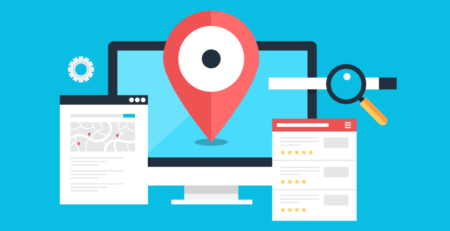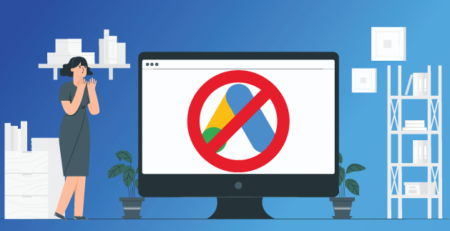Key Differences Between Inbound and Outbound Marketing
Understanding the key differences between inbound and outbound marketing is critical for small business owners looking to allocate their marketing budget effectively.
Which of the following best describes your small business?
1. I need more leads immediately! Use outbound marketing strategies.
2. My leads come primarily from current customers or referrals! Inbound marketing should be your focus.
3. I’m not sure yet…
If you need more clarity on this topic, we can help you figure it out. So, let’s dive into the details to understand the meaning of outbound and inbound marketing and the key differences between them.
What does outbound marketing mean?
Outbound marketing is a type of marketing that involves actively reaching out to potential customers. It typically involves traditional marketing activities, such as:
- Paid advertising
- Public relations
- Trade shows and events
- Email marketing
- TV
Outbound marketing is aimed at generating awareness of a product or service, building brand recognition, and driving sales. It can be an effective way to reach a wide audience, but it can also be expensive and time-consuming.
For businesses that are just starting, or for those who want to focus on other marketing channels, outbound marketing may not be the best option. However, for businesses that have the resources to scale up, outbound marketing can be an effective way to grow their business.
How much does outbound marketing cost?
The cost of outbound marketing varies depending on the tactics you use. For example, PPC can be more expensive than email marketing, but it can generate more leads and achieve your business goals faster. The best way to determine the cost of your outbound marketing campaign is to figure out your budget and then create a plan that fits within that budget.
How do I measure the success of my outbound marketing campaign?
- Track the number of leads or sales that you generate from your campaign.
- Analyze the percentage of people who take action after being exposed to your campaign (for example, if they visit your website or sign up for your email list).
- Measure the brand awareness by analyzing traffic, the number of social shares and backlinks, and running surveys.
Outbound marketing can be effective, however, it’s important to choose the right strategy for your business niche and make sure you know how to reach your target audience.
What does inbound marketing mean?
In short, inbound marketing is a methodology focused on bringing customers to you, as opposed to outbound strategies that promote company messages in hopes someone will eventually stumble across them.
A successful inbound marketing strategy means:
- Creating content targeting specific personas throughout the buyer’s journey stages
- Attracting an audience who can benefit from your products and converting them into leads
- Turning leads into paying customers by providing them an exceptional customer service for them to become promoters of your business
Inbound marketing means customer-centered marketing.
So how does one go about executing an inbound marketing strategy?
1. The first stage is based on the buyer’s persona research to build the flow of the buyer’s journey with relevant and valuable content. This content can have different forms, like blog posts, news articles, social media content, infographics, or e-books.
2. As a next stage, it is important to create calls-to-action (CTAs) bringing the target audience to your website where they can be converted into leads. Various forms and live chats work great for this purpose and help the sales team turn leads into paying customers.
3. Finally, you need to measure your results using software like HubSpot’s CRM which will help you see which campaigns are most effective at acquiring new customers to optimize your efforts over time.
So, inbound marketing is an effective way to turn cold leads into lifelong fans of your business. If you haven’t thought about investing in inbound marketing before, now is the time to get started!
Why is inbound marketing important?
Inbound marketing is the basis of building relationships with potential customers. By providing valuable information, you can earn their trust and loyalty. In addition, inbound marketing can help you to save money on advertising costs.
The best way to get started with inbound marketing is to start creating quality content. Start with identifying your target market and determining what type of content they would find useful. Once you understand your audience, you can focus on creating and distributing engaging content that will help you to build relationships with potential customers.
Key differences between inbound and outbound marketing
Inbound marketing and outbound marketing have different marketing approaches, though both have their advantages.
Outbound marketing is what most people think of when they hear the word “marketing.” It’s when you proactively reach out to consumers, usually through advertising, to get them interested in what you’re selling. It can be a great way to generate leads, but it can also be expensive and time-consuming. Plus, with so many ads competing for attention, it can be hard to stand out from the crowd.
Inbound marketing takes a different approach. Instead of reaching out to people, you create and distribute content that draws them into your website. That could be anything from a blog post or podcast episode to an e-book or webinar. The goal is to provide valuable information that can help solve someone’s problem or answer their question. If you do it well, they’ll keep coming back for more – and hopefully become paying customers along the way.
Both inbound and outbound marketing contain their pros and cons, so it’s important to choose the right approach for your business. But one thing’s for sure: if you want to succeed today, you need to have a solid marketing strategy.
FAQ
Does outbound marketing work?
Yes, outbound marketing can be an effective way to grow your business. However, it’s important to remember that no matter how much money you spend on outbound marketing, it will only be successful if you can reach your target audience and deliver a message that resonates with them.
What are the best channels for outbound marketing?
The best channels for outbound marketing vary depending on your industry and target audience. However, some popular channels include paid advertising (such as Google Ads), PR, trade shows, and email marketing.
What is inbound marketing?
Inbound marketing is a strategy that focuses on creating quality content that will attract customers to your business. By providing potential customers with useful information, you can build trust and establish yourself as a credible source.
How does inbound marketing work?
To get efficient results from inbound marketing, your strategy must align with your business goals and market needs. By understanding your target market, you can create content that will appeal to them. This content can be distributed through your website, social media channels, and email list.
Conclusion
Summing up, it is important to understand the differences between inbound and outbound marketing to build the right strategy for your business. You never know which approach will work better for you unless you analyze the market and your target clients’ needs.










